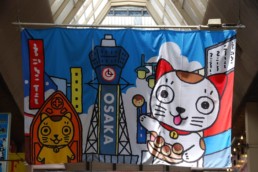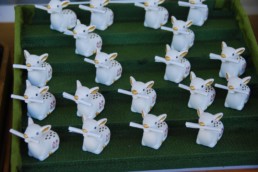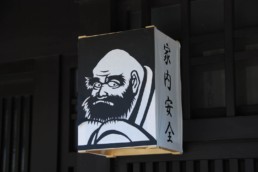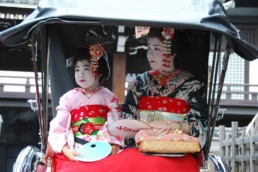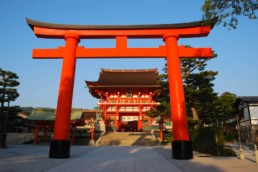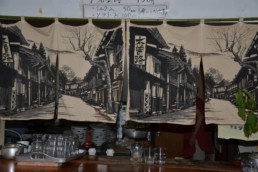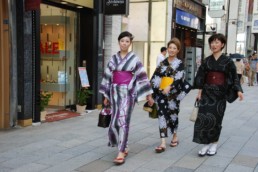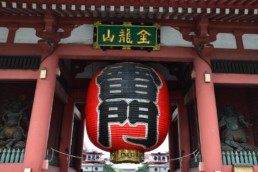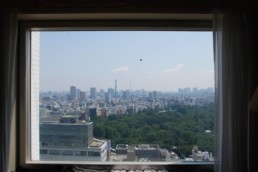Excellent night’s sleep on the futons of the ryokan. We eat a copious breakfast of miso soup, rice, and green tea. Our daughters still prefer a western-style breakfast and opt for some croissants. Check-out, and we are on our way to the train station. The staff offers to drive us (and our luggage) in the ryokan van. Arigato gozaimasu!
We go back to Ueda, where we have our connection for Nakatsugawa on the JR Chuo Line between Nagoya and Nagano. We eat a light lunch at the Nakatsugawa station while waiting for the bus to Magome.
Magome: one of only 3 postal relays remaining out of 69 from the Takugawa period, on the famous Tokaïdo road from Edo to Kyoto. Houses were rebuilt after a big fire in 1915 destroyed almost the entire village.
To reach the minshuku where we have reserved rooms, we need to walk up the small street which is the backbone of the village. The slope is steep, and our luggage is not getting any lighter. It is tiring. Why one always burdens oneself when travelling with too much luggage, I wonder. As usual, I end up trailing behind Francois and the girls by a significant distance. A Japanese tourist takes pity on me and offers to help drag my suitcase which is heavier than a sumo wrestler. We arrive at long last at the Magome Chaya minshuku. It is a bit like a bed and breakfast. The Japanese family which owns the place does not speak English. We will not get a chance to meet them, unfortunately. The young woman employee who greets us is from the Philippines. She speaks English fluently. She shows us our rooms, the common bathrooms and toilets, and explains the schedule: dinner is served at 6:30 pm, breakfast is at 7:30 am. This minshuku lacks in charm and is not quite as comfortable as the ryokan in Bessho-Onsen, not even close, but we like being in Magome.
Our rooms overlook the main street. The large windows are equipped with mosquito nets, so we leave them open. The stream which runs along the main street makes a nice, refreshing sound. The atmosphere is calm and serene. The rooms are large enough, modestly furnished with traditional straw mats, a low table, and a cabinet where the futons and duvets are stored in the daytime.
We spend the afternoon visiting the cute little village of Magome. There are quite a number of stores with nice handicraft objects and souvenirs.
The sound of cicadas combines with the sound of the stream flowing, it is very pleasant. We are in summer. And this year, the heat is extreme. We feel however that winters are very harsh in this part of the country.
Back to the minshuku. In the entrance, a disorderly collection of large-size walking shoes and sneakers of all sorts, worn-out, smelly, ugly, all scattered around in chaos. These of course belong to the mostly-western guests who here seem oblivious of Japanese manners. At the Bessho-Onsen ryokan, our Japanese hosts would discreetly put away our shoes on shelves by the side of the entrance. Sometimes you cannot help but feel a bit ashamed of some of your occidental travelling peers.
Delicious dinner of Japanese specialties at the minshuku before the hike scheduled for tomorrow.









